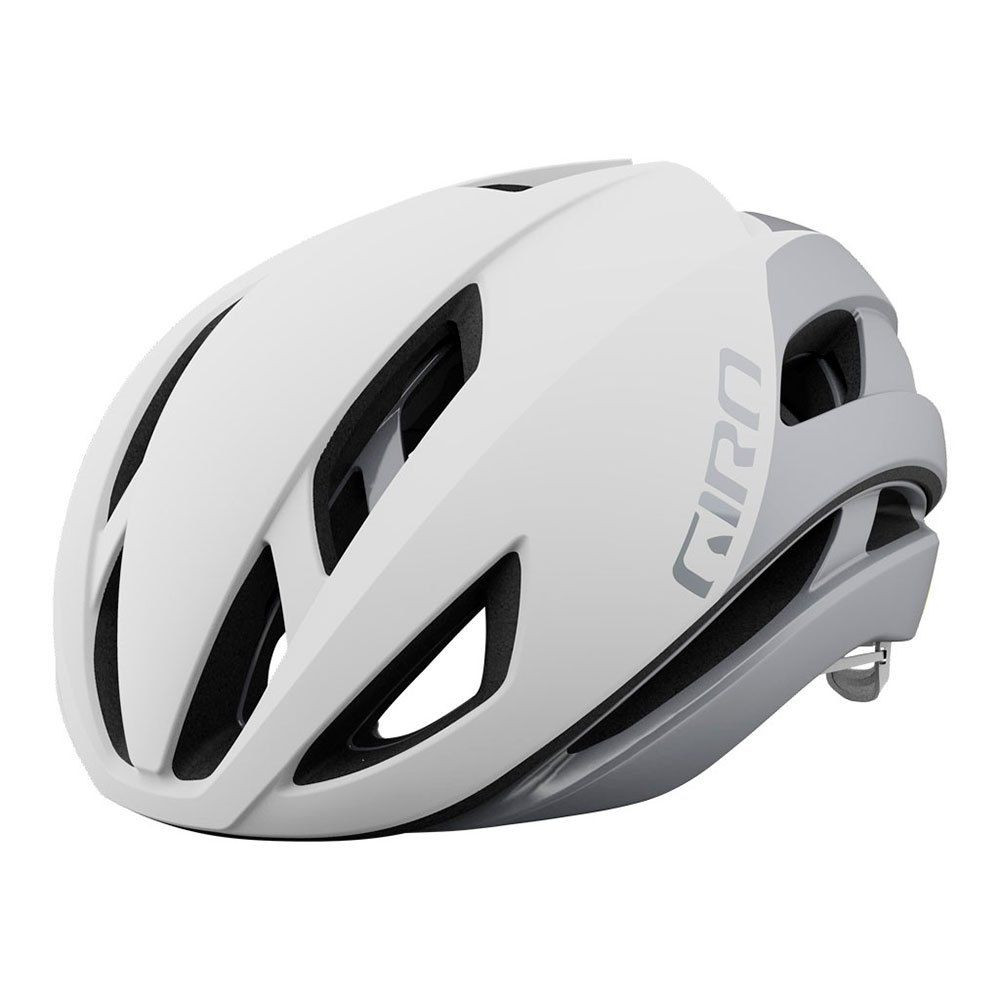The primary function of a road bike helmet is to protect your head in the event of a crash. It’s a critical piece of safety equipment for any cyclist. In fact, stringent safety standards are in place in regions like the UK, USA, and Europe, ensuring all helmets meet minimum protection levels before reaching the market.
However, modern Road Bike Helmets offer much more than basic safety. Thanks to advancements in technology, today’s helmets incorporate sophisticated systems to enhance protection, improve aerodynamics, maximize ventilation, and minimize weight. Take, for example, MIPS (Multi-directional Impact Protection System). This innovative technology is specifically engineered to mitigate injuries from angled impacts, which are common in cycling accidents and can cause rotational forces on the brain.
Beyond safety, performance and comfort are key considerations for road cyclists. When we evaluate road bike helmets, we rigorously assess factors like weight, aerodynamics, and ventilation. We understand that every rider has unique priorities, whether it’s shaving seconds off their personal best, staying cool on long climbs, or ensuring maximum comfort for everyday rides. Therefore, we encourage you to carefully consider your riding style, typical routes, and weather conditions when choosing a helmet.
Trying on a helmet before purchasing is crucial. Just like shoes or clothing, helmet fit varies significantly between brands and models. We’ve tested hundreds of helmets and consistently recommend trying several options to find the one that best matches your head shape and size. You can find more detailed guidance on this in our ‘How to choose a helmet‘ section below.
Price is another factor to consider. Road bike helmets range from budget-friendly to high-end premium options. If you’re riding on a budget, our guide to the best budget bike helmets is a great resource. For commuters, we also have a dedicated article on the best commuter bike helmets, focusing on features ideal for urban cycling.
Quick List of the Best Road Bike Helmets
1. Giro Eclipse Spherical Bike Helmet: Best Overall Road Bike Helmet
2. Lazer G1 Genesis Helmet: Best Lightweight Road Bike Helmet
3. Trek Ballista MIPS Bike Helmet: Best Aero Road Bike Helmet
4. Kask Sintesi Bike Helmet: Best Budget Road Bike Helmet
5. Giro Aether MIPS Bike Helmet: Best All-Rounder Road Bike Helmet
6. MET Codatronca Bike Helmet: Best Time Trial (TT) Road Bike Helmet
7. POC Ventral Spin Helmet: Best Aero All-Rounder Road Bike Helmet
8. Specialized Evade 3 Helmet: Best Ventilated Road Bike Helmet
9. Kask Utopia Y Helmet: Best Lightweight Aero Road Bike Helmet
Best Overall Road Bike Helmet
1. Giro Eclipse Spherical Bike Helmet
Pros: Comfy, fast, safe, MIPS technology, impressive ventilation for an aero helmet, flap-free straps.
Cons: Can appear a bit bulky on some heads.
The Giro Eclipse Spherical excels as an all-around road bike helmet, blending comfort, aerodynamics, and safety seamlessly. It incorporates MIPS Spherical technology, placing the MIPS layer between two EPS foam layers for enhanced protection against rotational impacts. Our testers found it exceptionally comfortable, even in hot conditions exceeding 35°C, thanks to its impressive ventilation. Thoughtful details, like well-fitting, non-flapping straps and sunglass storage in the front vents, add to its appeal. Giro claims the Eclipse is their fastest non-TT aero helmet to date, and while we haven’t independently verified this, our tester achieved personal best downhill speeds while wearing it.
Read more in our expert review: Giro Eclipse Spherical cycling helmet full review
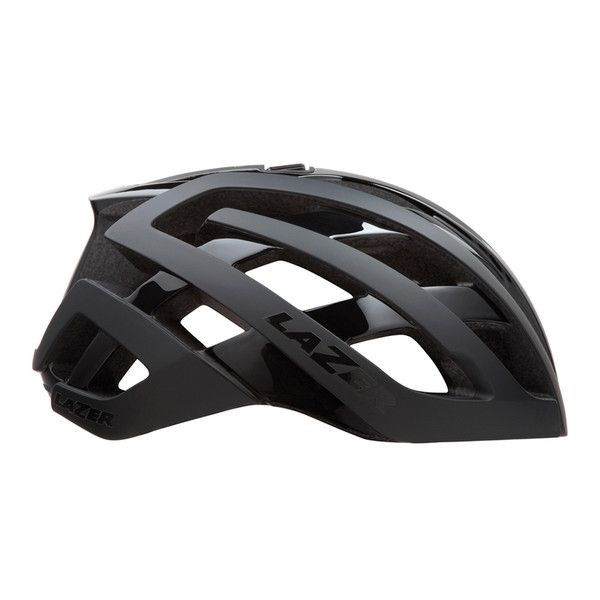 Lazer G1 Genesis helmet
Lazer G1 Genesis helmet
Best Lightweight Road Bike Helmet
2. Lazer G1 Genesis Helmet
Pros: Extremely lightweight (205g), comfortable fit, secure feel.
Cons: Aero performance requires an aftermarket aeroshell.
The Lazer G1 Genesis is a standout lightweight road bike helmet, weighing in at a mere 205g. However, its merits extend beyond just weight. The G1 Genesis offers a comfortable and secure fit, with a user-friendly rear dial adjuster for fine-tuning. While it boasts a simple, stylish aesthetic, an optional aero cover is available for riders seeking aerodynamic advantages. The rear retention cradle provides significant vertical adjustment, though horizontal adjustment is less refined compared to Giro helmets. Despite this, its lightweight construction contributes significantly to overall comfort, making it nearly 55g lighter than the Giro Helios Spherical MIPS helmet.
Read more in our expert review: Lazer G1 Genesis cycling helmet full review
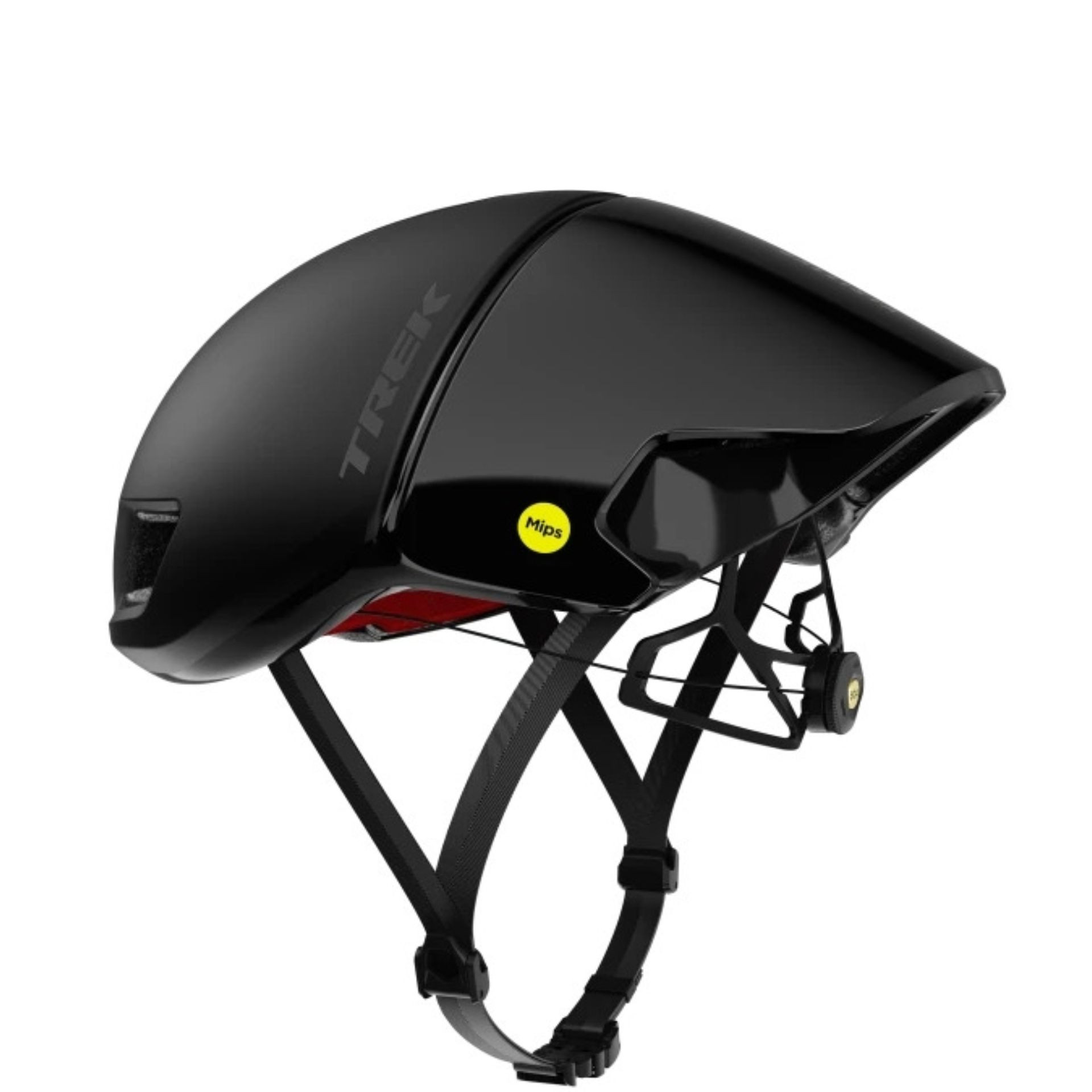 Trek Ballista MIPS helmet
Trek Ballista MIPS helmet
Best Aero Road Bike Helmet
3. Trek Ballista MIPS Bike Helmet
Pros: Excellent airflow for an aero helmet, easy BOA fit adjustment, stylish aesthetics.
Cons: BOA height adjustment can be slightly tricky, premium price.
The Trek Ballista MIPS is designed for aerodynamic efficiency without compromising everyday usability. This aero road bike helmet incorporates MIPS Air Node technology, eliminating the need for a separate internal liner. Its distinctive dropped tail design enhances aerodynamics, while ventilation remains surprisingly effective for an aero helmet. The BOA dial system ensures a secure and stable fit, complemented by comfortable, low-profile padding and easily adjustable straps. Testers were particularly impressed with the airflow, which rivals even more ventilated helmets, despite having only two front vents. It’s also ponytail-friendly, although the rear cradle height adjustment can be a bit fiddly.
Read more in our expert review: Trek Ballista MIPS bike helmet full review
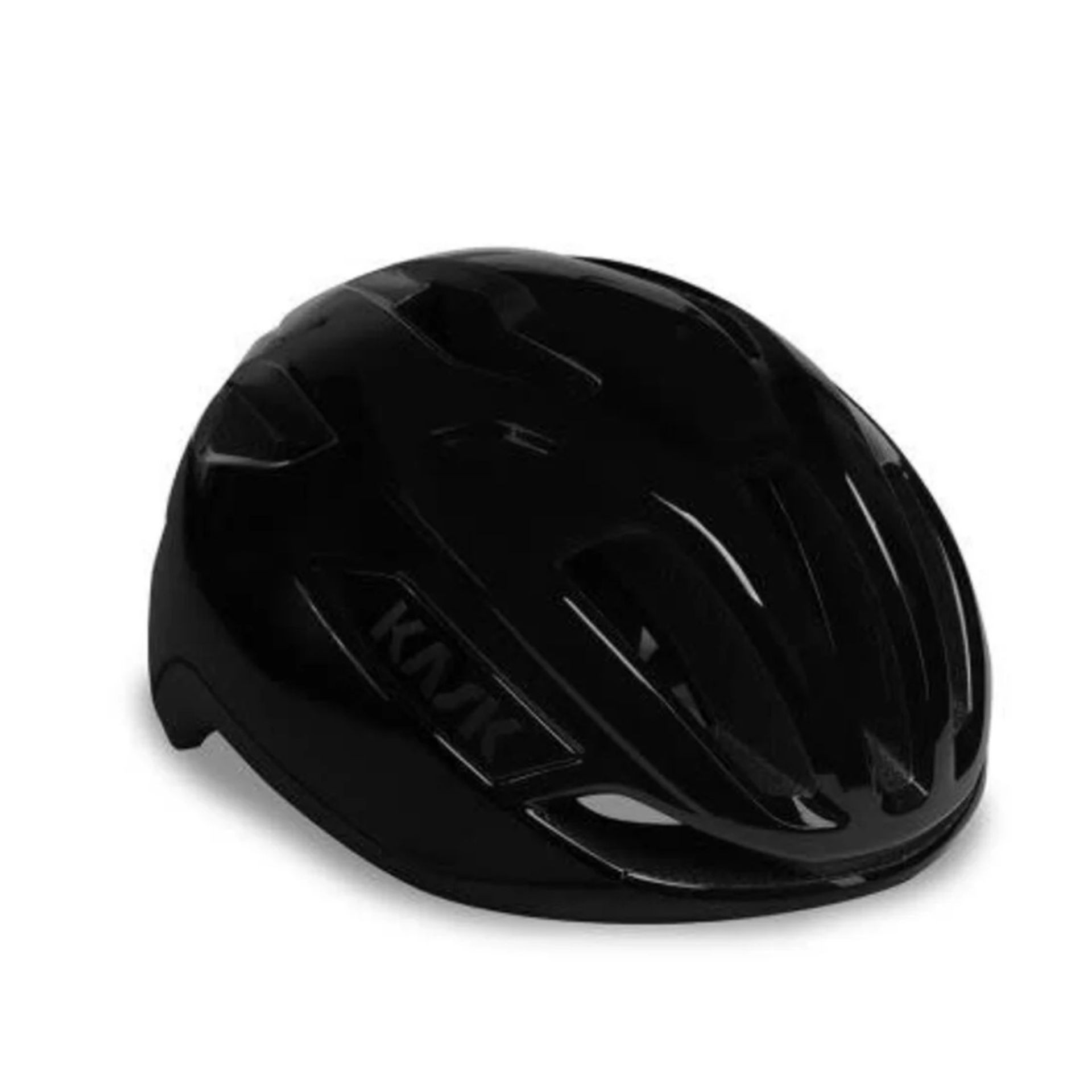 Kask Sintesi bike helmet
Kask Sintesi bike helmet
Best Budget Road Bike Helmet
4. Kask Sintesi Bike Helmet
Pros: Good adjustability for various head sizes, synthetic leather chinstrap, excellent value.
Cons: Lacks a dedicated glasses port.
The Kask Sintesi is a fantastic budget-conscious option, offering a versatile helmet suitable for road cycling, gravel riding, and commuting. Its neutral style and wide color range enhance its versatility. Kask’s Ergo Fit retention system provides ample vertical and circumference adjustment, accommodating a broad range of head sizes within two shell sizes. A comfortable synthetic leather chinstrap adds a touch of premium feel. For safety, the Sintesi utilizes Kask’s WG11 rotational impact protection, instead of a separate MIPS liner. In testing, the Sintesi provided good airflow and head cooling, although it lacks dedicated ports for storing sunglasses.
Read more in our expert review: Kask Sintesi helmet full review
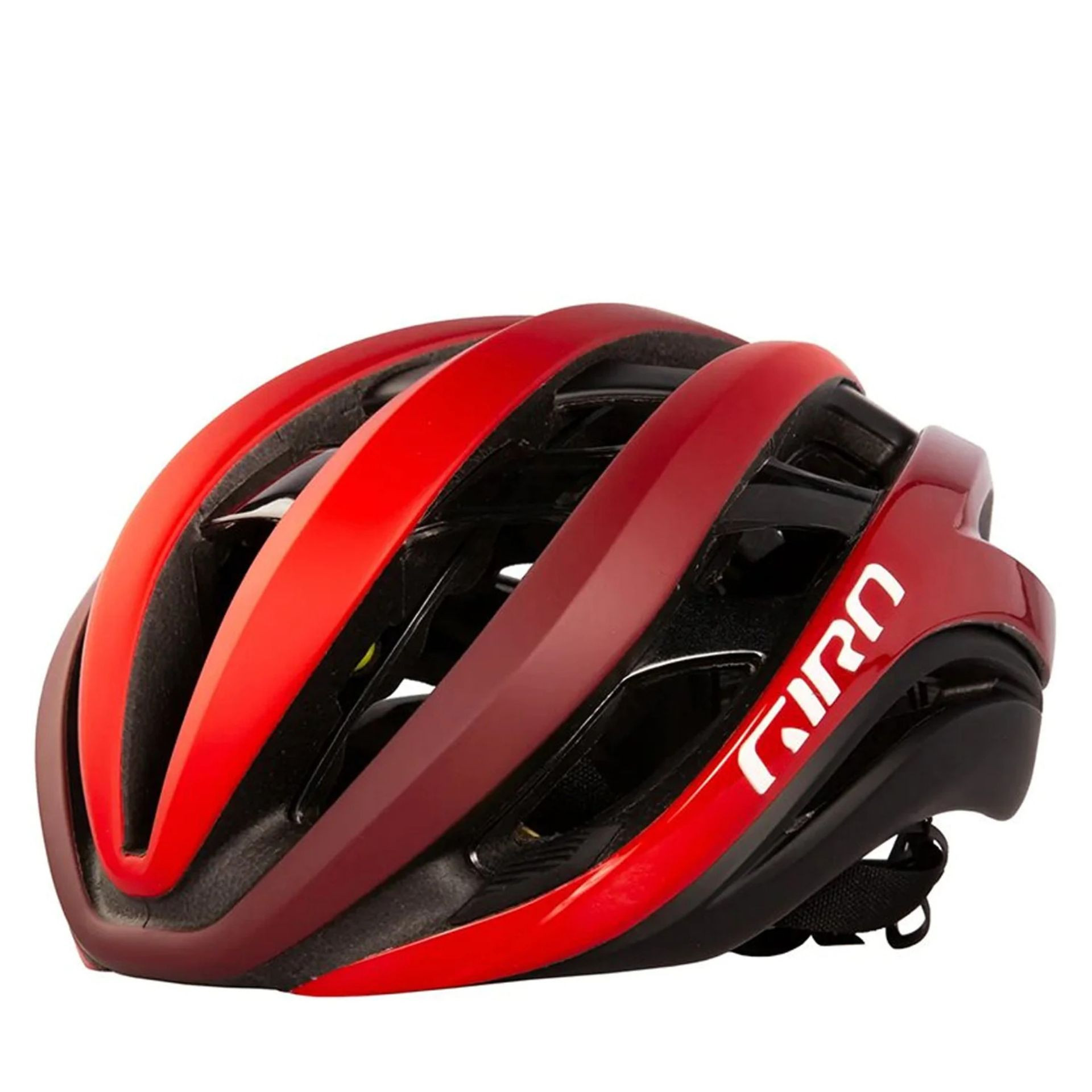 Giro Aether MIPS helmet
Giro Aether MIPS helmet
Best All-Rounder Road Bike Helmet
5. Giro Aether MIPS Bike Helmet
Pros: Lightweight (under 270g), exceptionally breathable, numerous air channels for cooling, wide color selection.
Cons: Slightly bulbous appearance for some.
The Giro Aether MIPS is a consistently top-rated all-rounder, delivering exceptional performance across various aspects. We’ve hailed it as a game-changer due to its unrivaled versatility. Ventilation is a standout feature, keeping riders cool even in hot conditions. While not the absolute lightest, it remains impressively lightweight at 269g (size small). The Aether MIPS boasts a sleek design with a wide array of color options, making it suitable for any riding style. Its comfort and performance earned it a five-star rating and a Cycling Weekly Editor’s Choice Award. Fit is the primary consideration; ensure it suits your head shape before purchasing.
Read more in our expert review: Giro Aether MIPS helmet full review
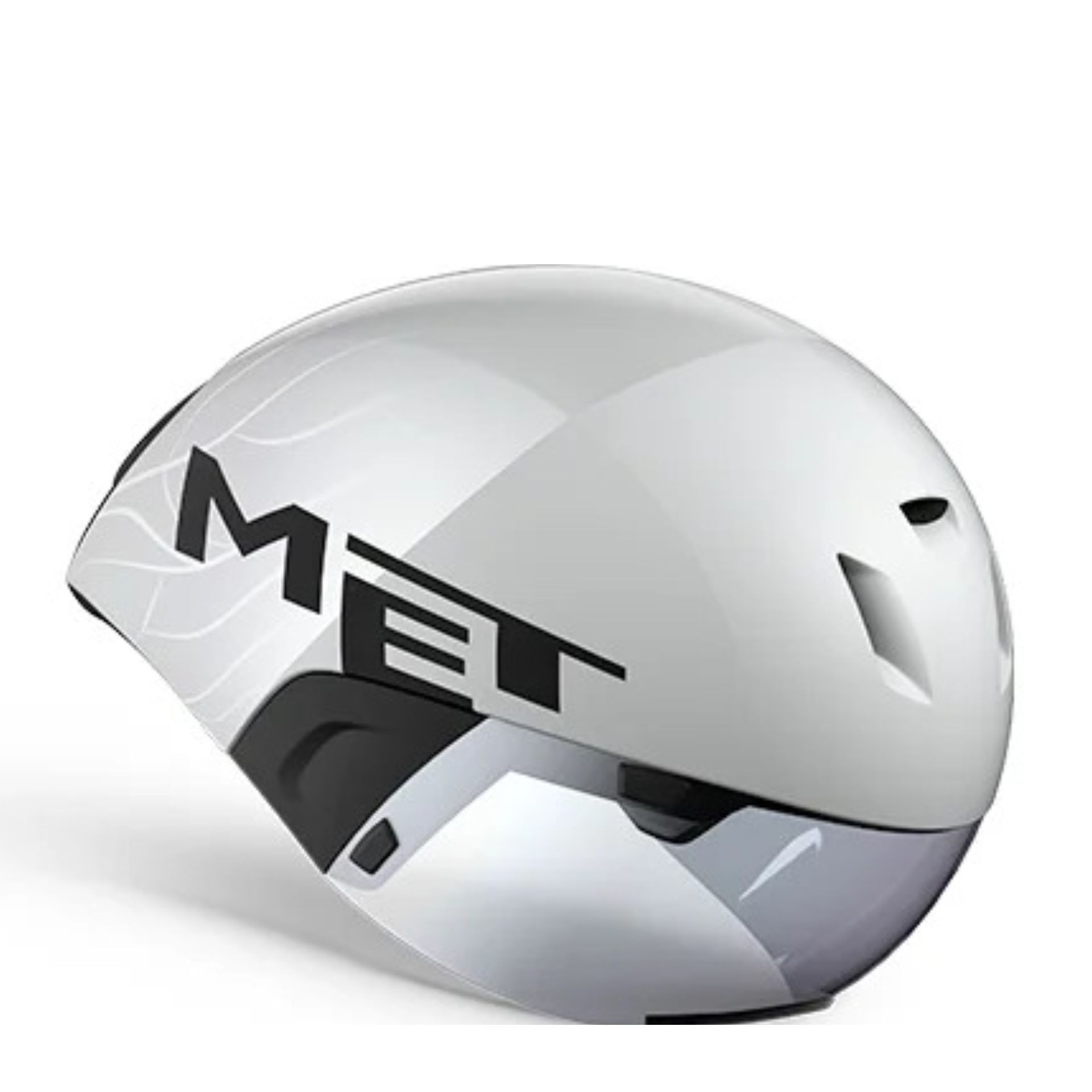 MET Codatronca TT bike helmet
MET Codatronca TT bike helmet
Best TT Road Bike Helmet
6. MET Codatronca Bike Helmet
Pros: Comfortable fit for a TT helmet, highly adjustable, versatile for varied racecourses.
Cons: Visor vision could be improved.
The MET Codatronca is a dedicated time trial helmet designed for versatility on longer and undulating courses. Its shorter tail design provides aerodynamic advantages without requiring a perfectly static “turtle” position, making it ideal for courses with hills and corners. Comfort is surprisingly good for a TT helmet, with MET’s ‘Safe-T Orbital’ fit system ensuring a secure fit. Ventilation is decent, with three front vents and two rear exhaust ports. It includes a magnetic visor system, though the visor’s length may require some adjustment for optimal vision. While a premium-priced option, it aligns with competitors like the Giro Aerohead MIPS. Note: MET helmets are currently not available for sale or shipment to the US.
Read more in our expert review: MET Codatronca full review
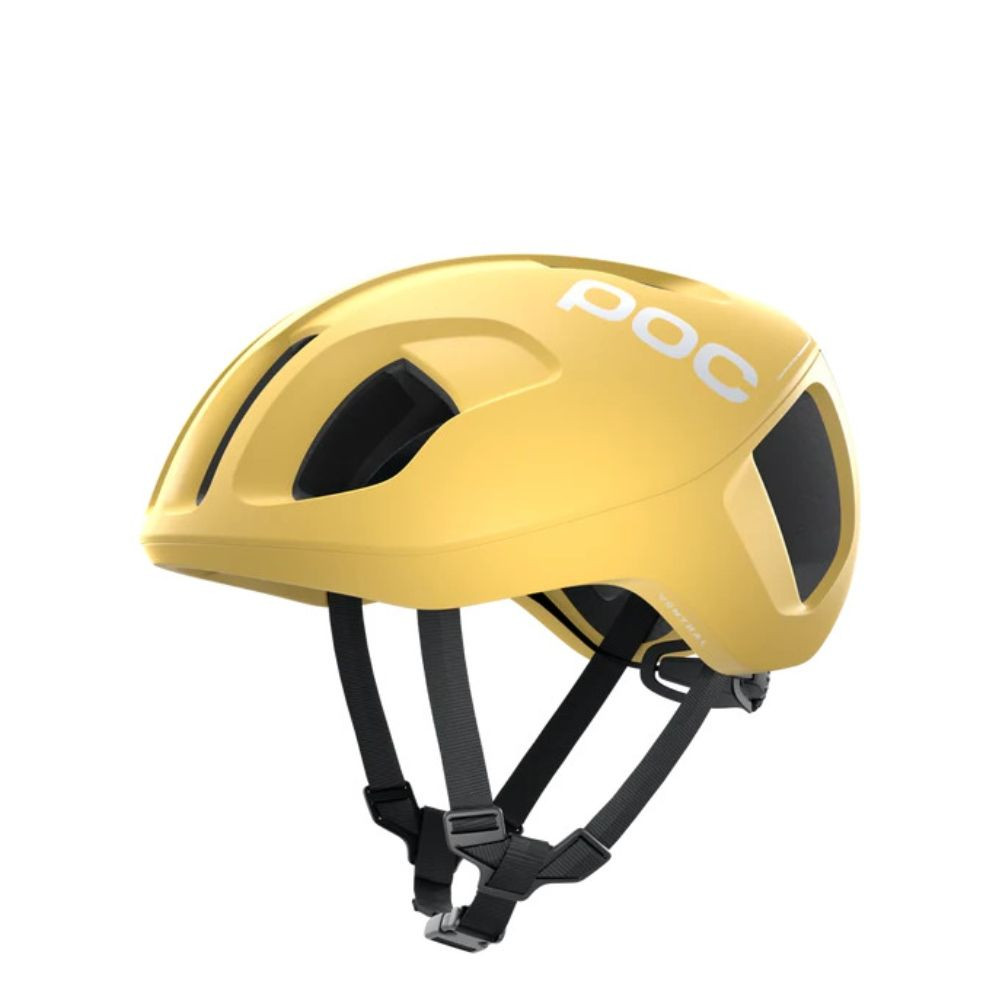 POC Ventral Air SPIN helmet
POC Ventral Air SPIN helmet
Best Aero All-Rounder Road Bike Helmet
7. POC Ventral Spin Helmet
Pros: Aerodynamically tested, lightweight for an aero helmet, breathable compared to other aero options, excellent sunglass retention, comfortable and secure fit.
Cons: Styling can be polarizing.
The POC Ventral Spin excels as an aero all-rounder, balancing aerodynamic performance with breathability. Its large air ports distinguish it visually from typical aero helmets with solid shells. It incorporates POC’s SPIN (Shearing Pad INside) technology for rotational impact protection, using silicone bladders and pads. A standout feature is the integrated sunglass grippers, compatible with various sunglass brands, providing secure on-helmet storage. Testers praised its aerodynamic qualities without sacrificing ventilation, making it a top choice for riders seeking aero gains in a versatile package.
Read more in our expert review: POC Ventral SPIN cycling helmet full review
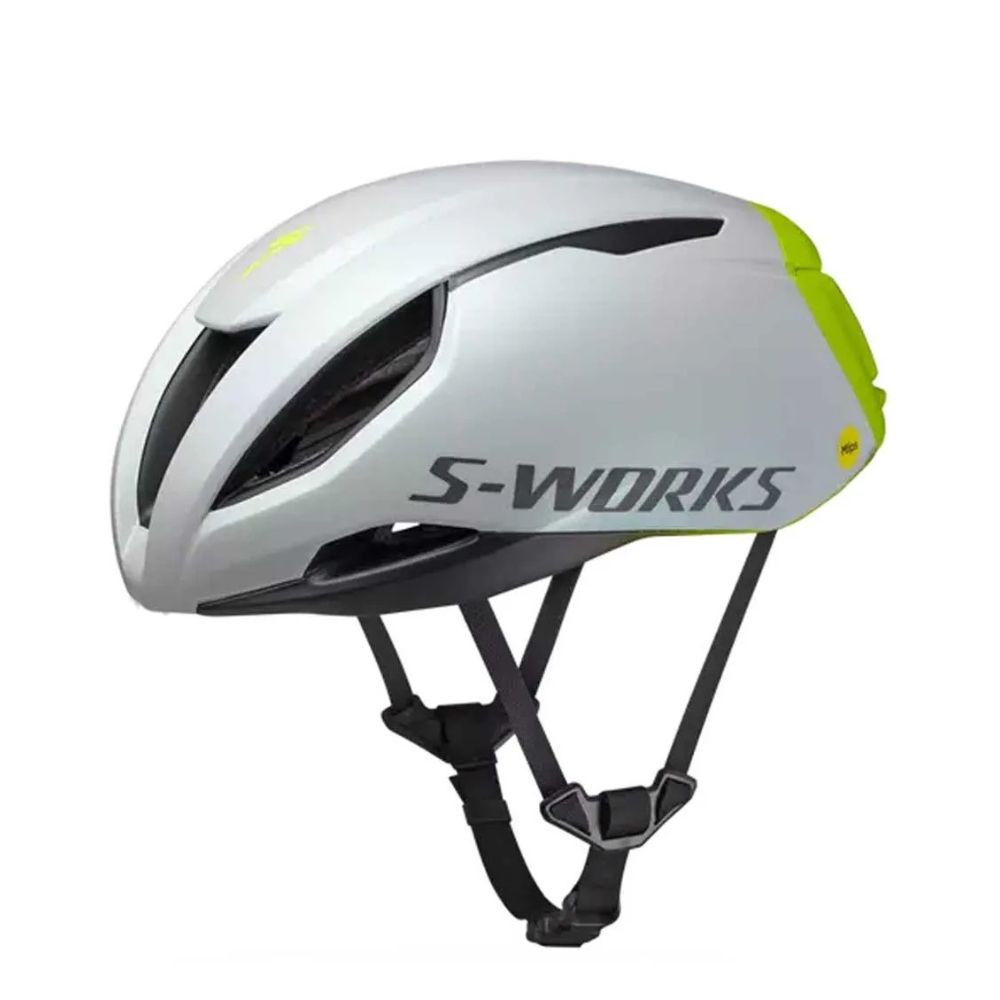 Specialized Evade 3 helmet
Specialized Evade 3 helmet
Best Ventilated Road Bike Helmet
8. Specialized Evade 3 Helmet
Pros: Aerodynamic, very comfortable fit, highly breathable, optional Specialized ANGi crash sensor, minimalist MIPS Air Node.
Cons: Heavier than some alternatives at 290g.
The Specialized Evade 3 represents the third iteration of this aero helmet, focusing on enhanced airflow and comfort without compromising aerodynamics. Larger front vents and a rear “diffuser” with wide vents improve ventilation. Thinner straps, a standard buckle, and MIPS Air Node technology, integrated into the padding, contribute to comfort and a less obtrusive feel. It’s compatible with the Specialized ANGi crash sensor (optional). Testers found the Evade 3 comfortable even in hot summer conditions and noted less wind flap from the narrower straps.
Read more in our expert review: Specialized S-Works Evade 3 full review
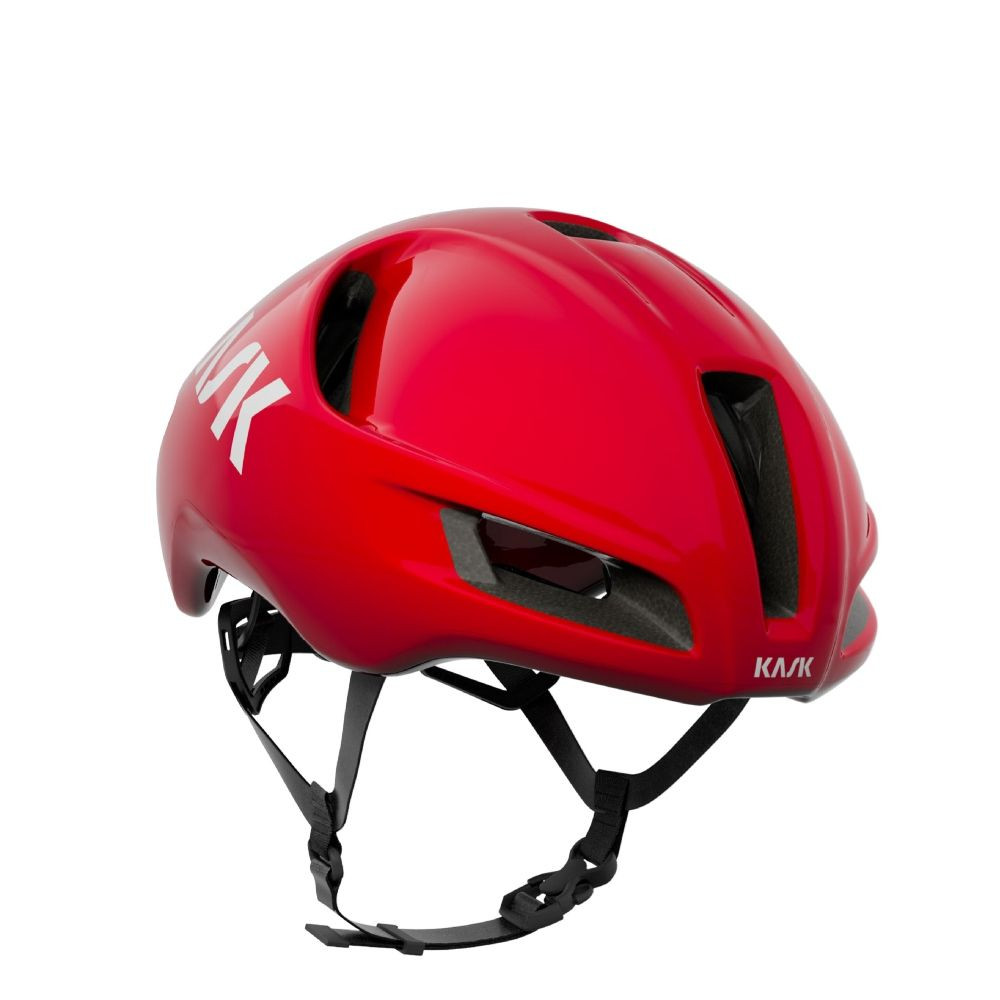 Kask Utopia Y helmet
Kask Utopia Y helmet
Best Lightweight Aero Road Bike Helmet
9. Kask Utopia Y Helmet
Pros: Well-ventilated, lightweight (260g), low profile design, aerodynamic benefits, highly adjustable.
Cons: Premium price point.
The Kask Utopia Y is a refined lightweight aero helmet, combining aerodynamic performance with comfort and aesthetics. Despite its aero profile, it offers excellent ventilation through deep internal channeling and brow vents, keeping riders cool and preventing sweat buildup on sunglasses. The retention band provides precise millimeter-level adjustment for a snug and comfortable fit, enhanced by thick interior padding. At just 260g (size medium), it’s impressively light for an aero road helmet, feeling virtually unnoticeable while riding. Its sleek, non-bulky design and wide range of nine colors add to its appeal.
Read more in our expert review: Kask Utopia Y cycling helmet full review
Honorable Mentions
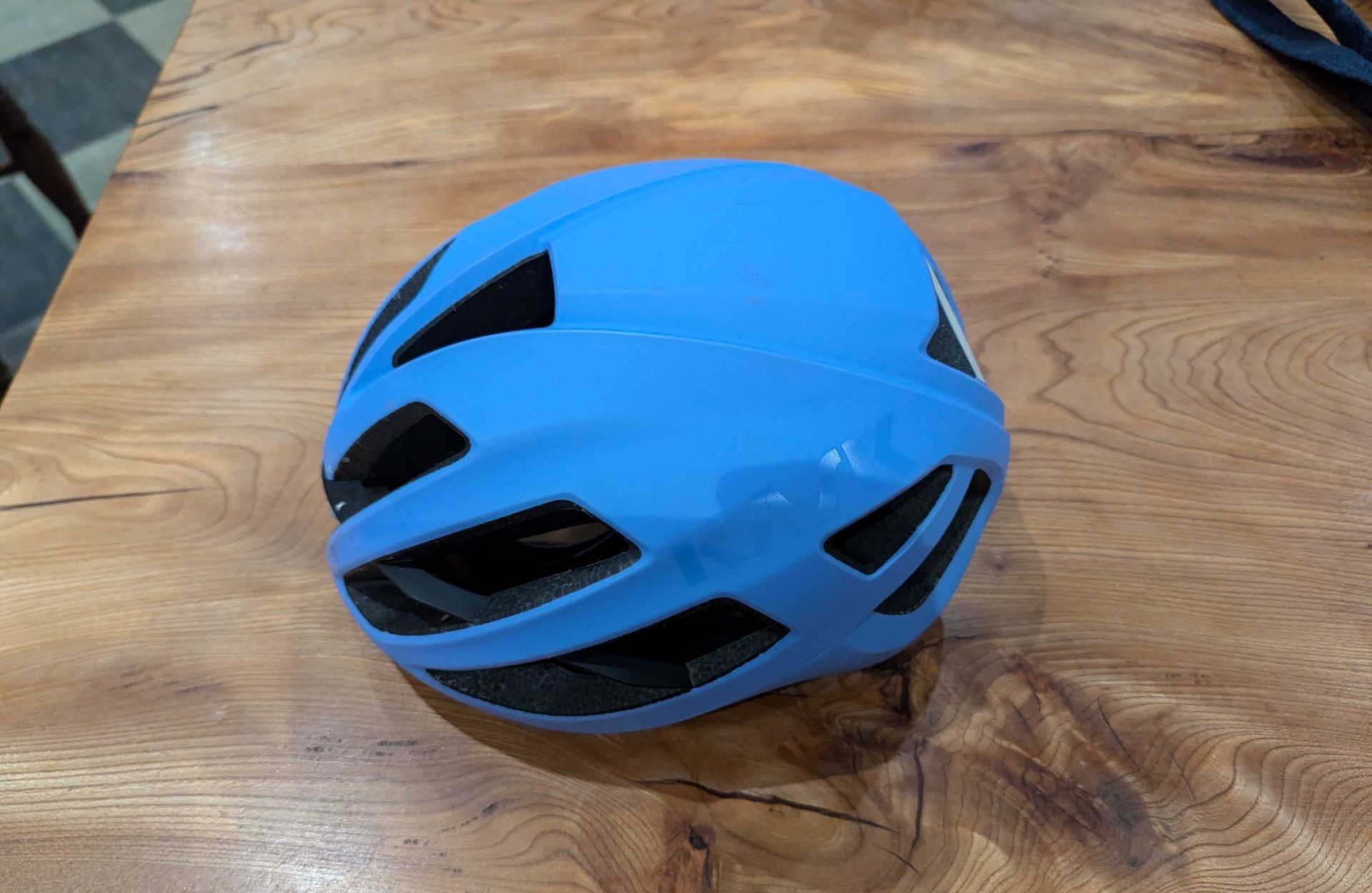 Kask Protone Icon Mips blue cycling helmet on wood background
Kask Protone Icon Mips blue cycling helmet on wood background
10. Kask Protone Icon
Pros: Solid build quality, lightweight construction, incredibly comfortable Octofit system.
Cons: Not a top performer in Hiper and Virginia Tech safety ratings.
The Kask Protone Icon is an updated version of a WorldTour-proven helmet, retaining its original shape with enhanced features. A more robust internal frame improves impact protection, and a rear reflective insert enhances visibility. Ventilation is provided by 20 vents and a removable Coolmax lining. Kask’s Octofit+ system ensures a comfortable and secure fit, easily adjustable even with gloves. Weighing 232g, it feels light and comfortable on the head, with padding effectively managing sweat and ventilation providing adequate airflow.
Read more in our expert review: Kask Protone Icon full review
 Lazer Vento KinetiCore which is one of the best bike helmets
Lazer Vento KinetiCore which is one of the best bike helmets
11. Lazer Vento KinetiCore Bike Helmet
Pros: Feels fast, decent ventilation for an aero helmet, independently verified 5-star safety, secure fit.
Cons: Difficult glasses storage, not the lightest at 291g.
The Lazer Vento KinetiCore is an aero-focused helmet that balances speed with ventilation. While prioritizing aerodynamics, it still offers comparable ventilation to other aero helmets. Its low-profile, non-bulky design is aesthetically pleasing. Comfort is excellent, and the updated retention system is a significant improvement over previous Lazer designs. The KinetiCore safety technology is independently rated at 5 stars. However, glasses storage is challenging due to narrow ports, and at 291g, it’s not the lightest option.
Read more in our expert review: Lazer Vento KinetiCore helmet full review
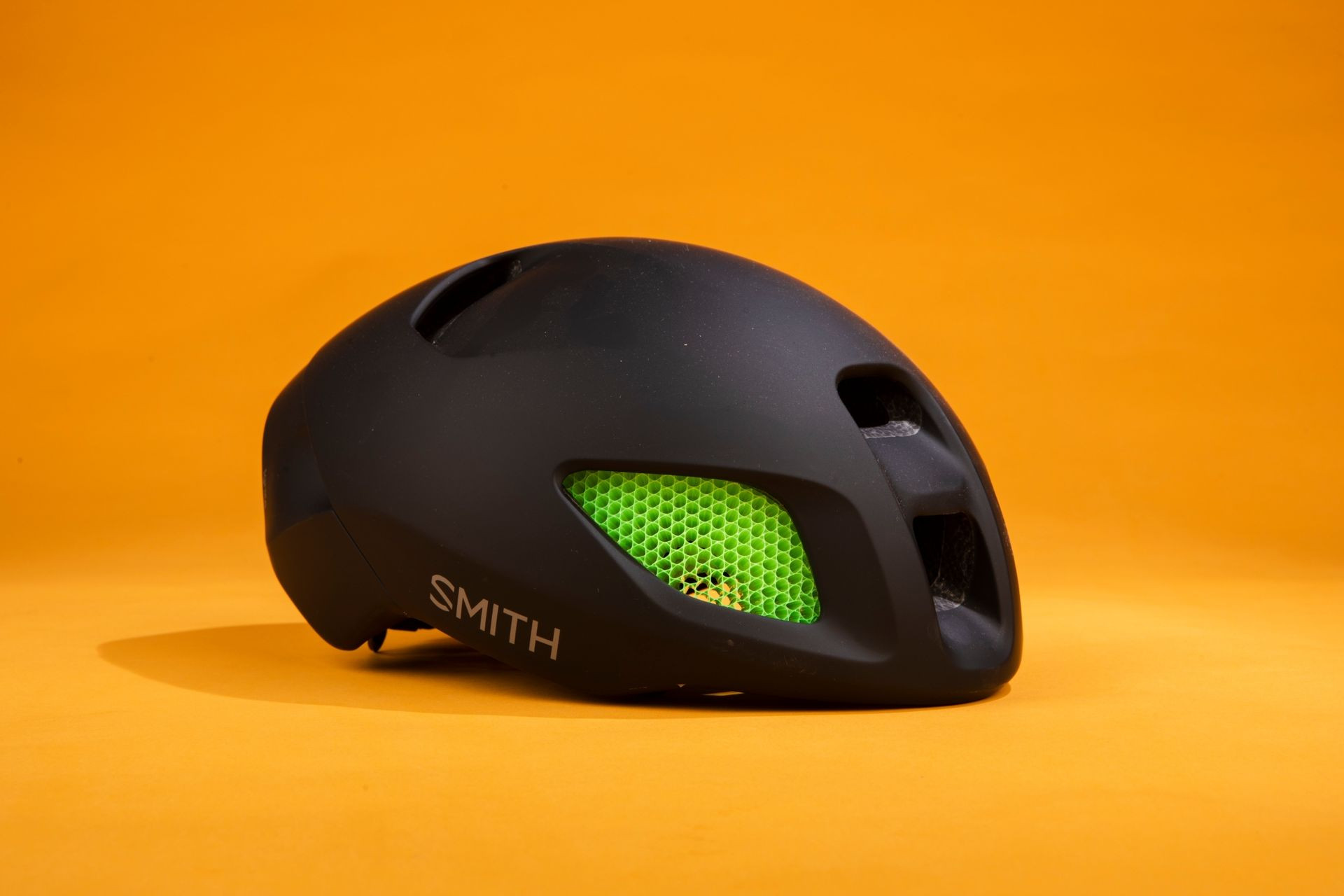 Smith Ignite helmet featured front side on in black with green inserts on an orange background
Smith Ignite helmet featured front side on in black with green inserts on an orange background
12. Smith Ignite Helmet
Pros: Excellent safety features (Koroyd & MIPS), comfortable fit, distinctive aesthetics, great aerodynamics.
Cons: Matt finish can be difficult to keep clean.
The Smith Ignite is a high-safety aero road bike helmet, packed with features including Koroyd and MIPS. It offers a comfortable fit with Smith’s VaporFit retention system, providing both vertical and horizontal adjustment, a rare feature in aero helmets. Its aerodynamic performance is notable, and the aesthetics are distinctive. However, the matt finish tends to show dirt easily.
Read more in our expert review: Smith Ignite cycling helmet full review
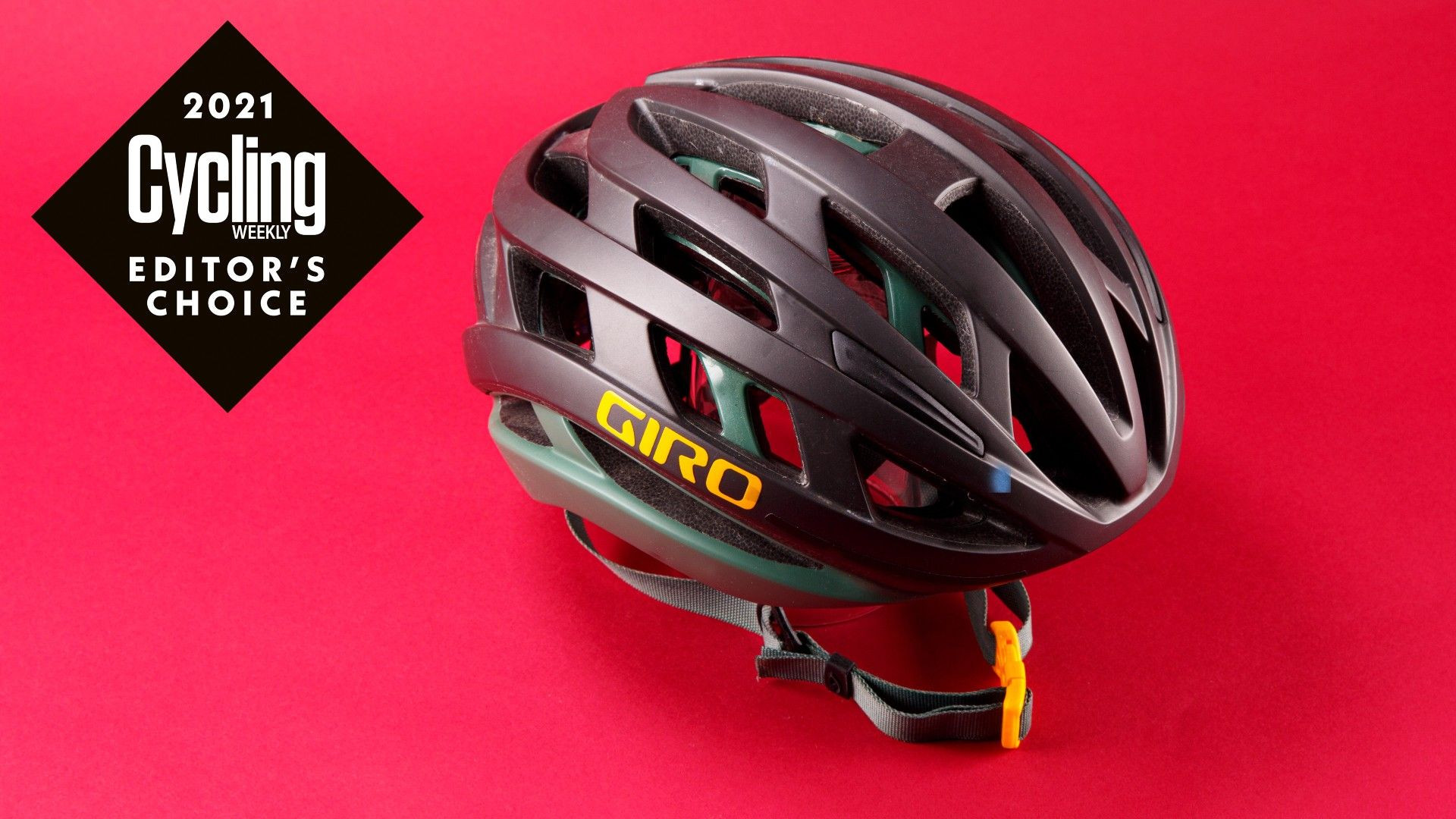 Giro Helios Spherical Mips which is one of the best bike helmets
Giro Helios Spherical Mips which is one of the best bike helmets
13. Giro Helios Spherical MIPS Cycling Helmet
Pros: MIPS for high safety standard, lightweight and comfortable on various terrains, aerodynamic properties comparable to pricier helmets.
Cons: No eyewear dock for sunglasses storage.
The Giro Helios Spherical MIPS is an excellent value all-rounder, bridging the gap between road and off-road cycling. It features the same Spherical MIPS protection as the Giro Aether at a lower price. It’s even lighter than the Aether, with a minimal difference in ventilation performance. Comfort is comparable to the Aether. The main drawback is the lack of a dedicated eyewear dock for sunglasses.
Read more in our expert review: Giro Helios Spherical MIPS cycling helmet full review
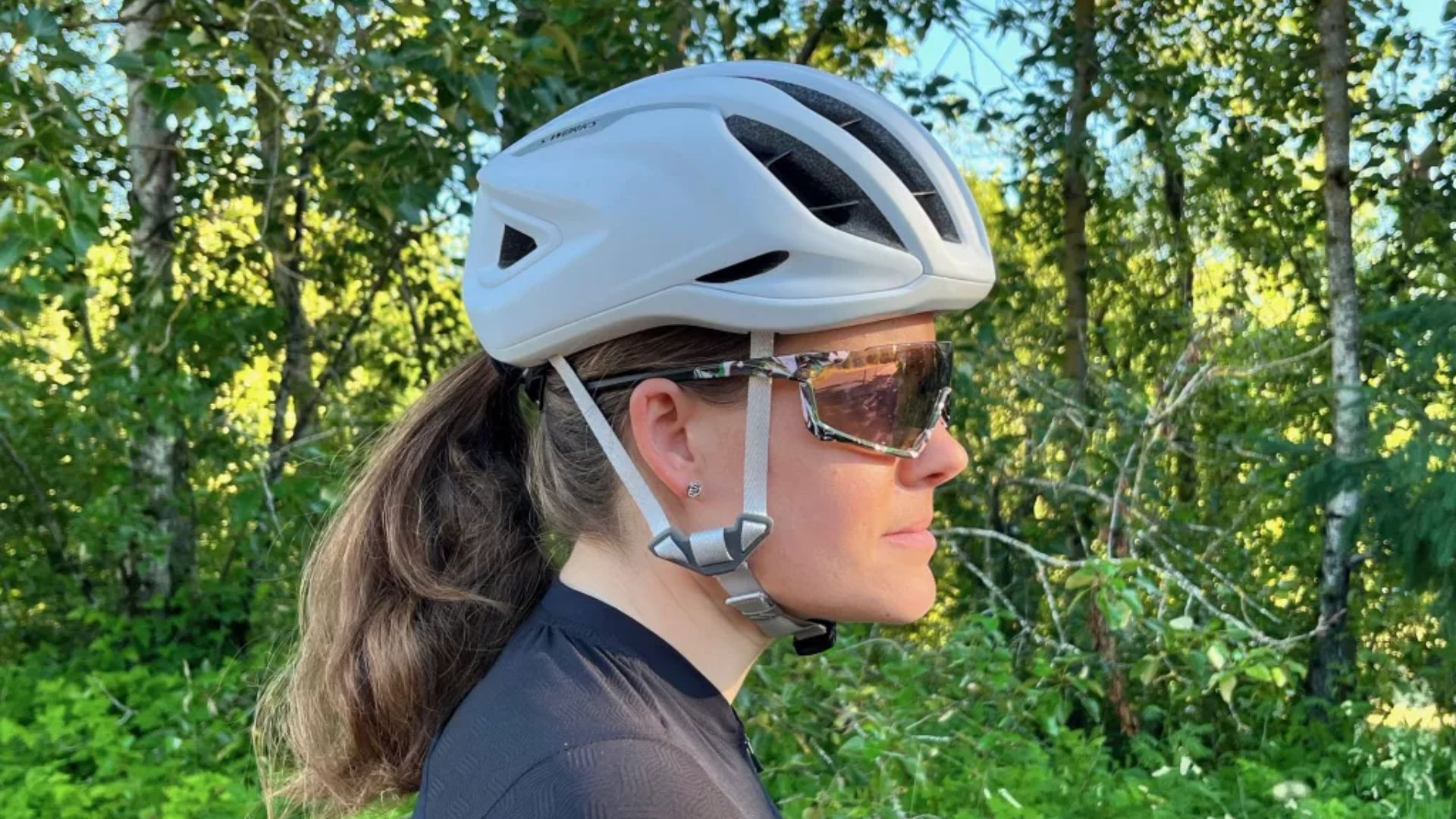 A rider wearing the Specialized S-Works Prevail 3 which is one of the best bike helmets
A rider wearing the Specialized S-Works Prevail 3 which is one of the best bike helmets
14. Specialized S-Works Prevail 3
Pros: Superior ventilation, top safety features.
Cons: Large vents can attract bugs.
The Specialized S-Works Prevail 3 is designed for maximum ventilation and safety. Its Air Cage design increases ventilation by nearly 25% compared to the Prevail 2 without compromising safety. MIPS AirNode technology is integrated into the padding to reduce weight and enhance ventilation. The large vents provide excellent airflow, keeping riders cool even in hot climates. While not the lightest at 280g, the exceptional ventilation makes it ideal for hot weather riding.
Read more in our expert review: Specialized S-Works Prevail 3 full review
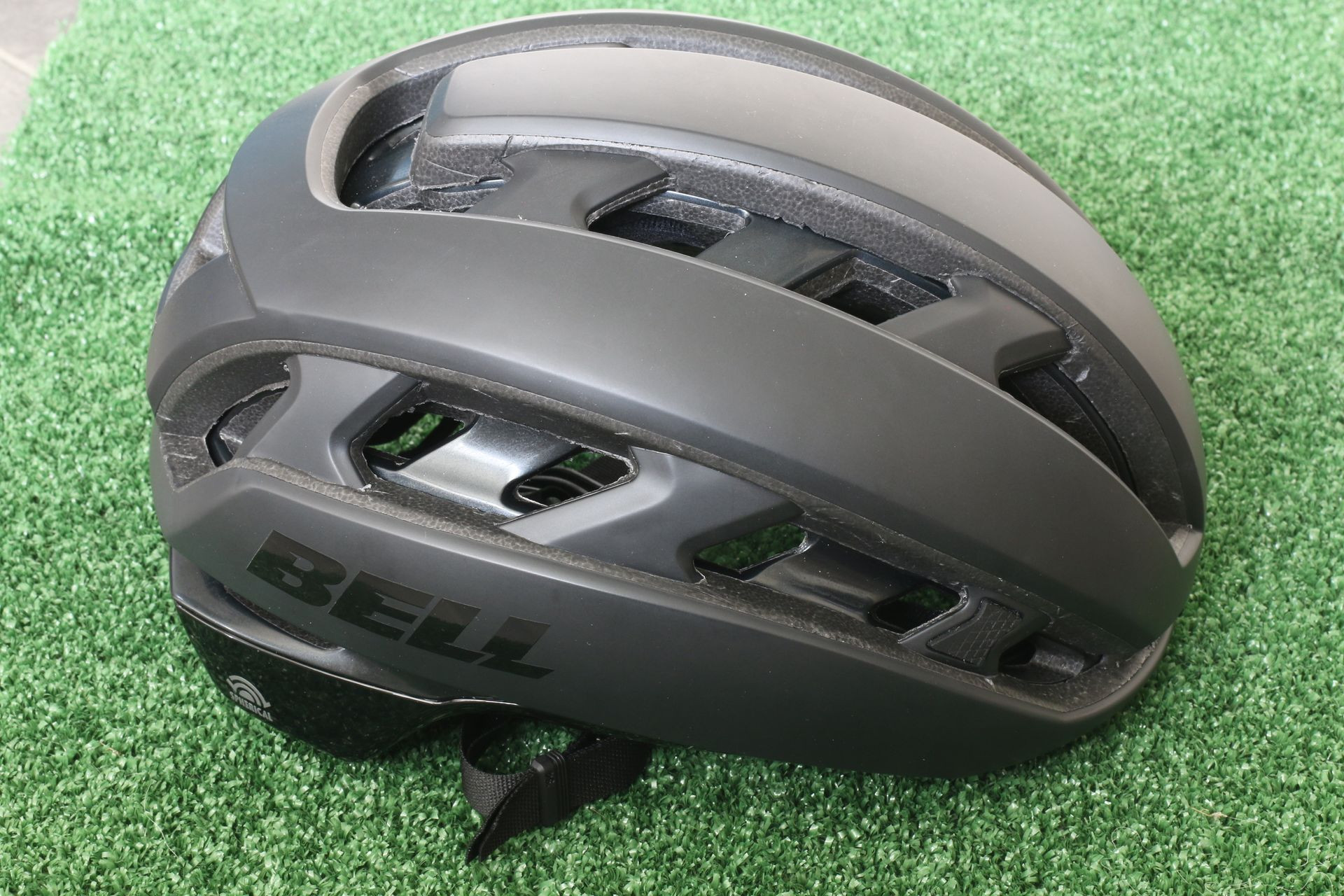 Bell XR Spherical MIPS which is one of the best bike helmets
Bell XR Spherical MIPS which is one of the best bike helmets
15. Bell XR Spherical MIPS
Pros: Well-ventilated, comfortable and easy to adjust, MIPS protection.
Cons: A bit heavy, over 300g for a large size.
The Bell XR Spherical MIPS is a do-it-all helmet suited for both road and gravel riding. It features a compact, well-ventilated shape with 14 vents. The inner shell extends lower for added gravel riding protection. Spherical MIPS technology enhances rotational impact protection. Bell’s Float Fit system, comfortable straps, and a magnetic buckle provide easy adjustment and a stable fit. Ventilation is excellent, contributing to overall comfort. However, it’s not the lightest option, especially in larger sizes.
Read more in our expert review: Bell XR Spherical MIPS cycling helmet full review
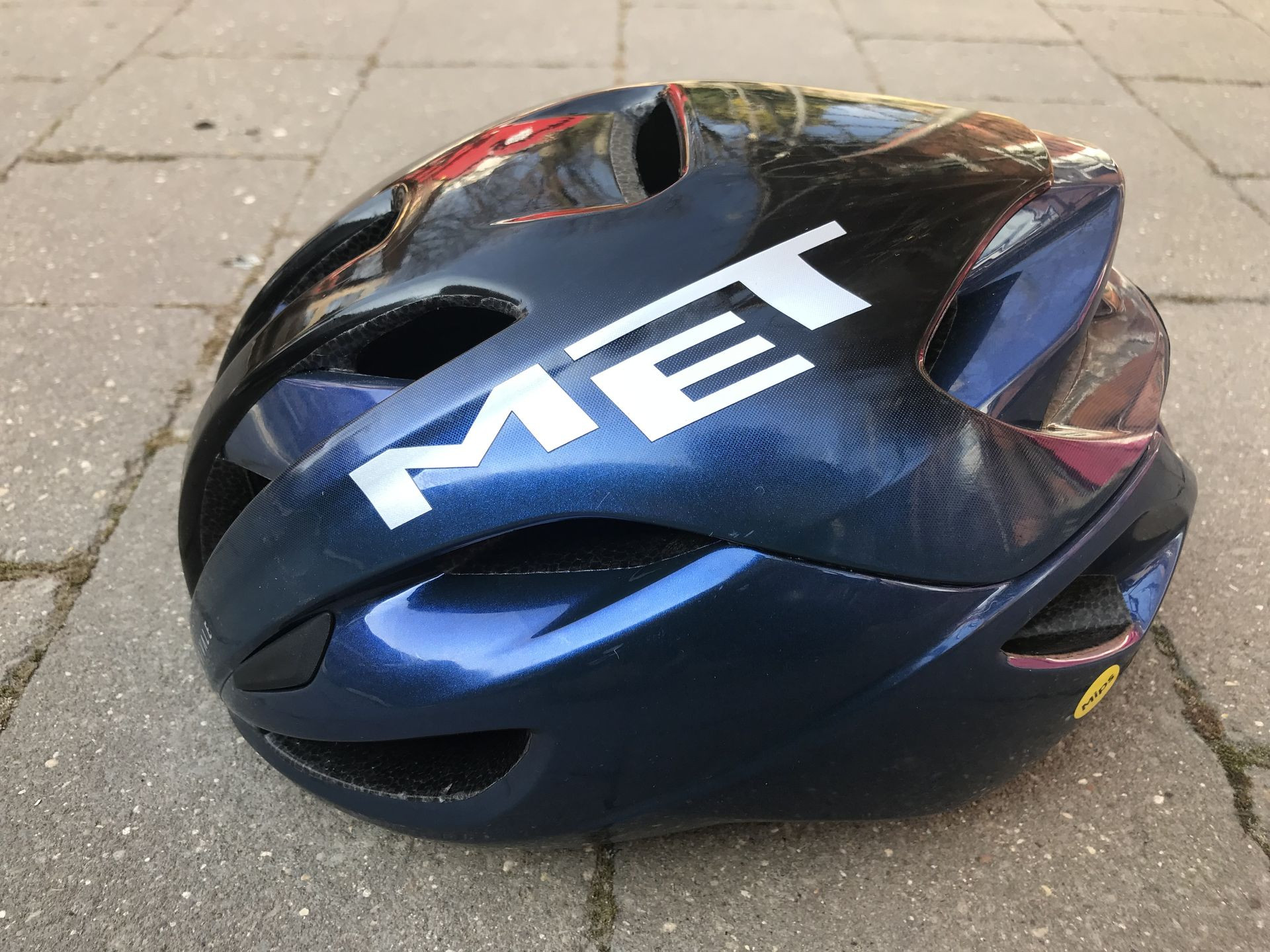 MET Rivale MIPS
MET Rivale MIPS
16. MET Rivale MIPS Helmet
Pros: Lightweight (242g), MIPS liner, good ventilation, aero design, fitting adjustability.
Cons: Aero and ventilation design compromises performance in both areas.
The MET Rivale MIPS balances aerodynamics and ventilation for all-road road cycling. 18 vents, predominantly at the front, promote airflow, while the rear shaping minimizes drag. It includes a MIPS liner for enhanced safety. The fitting system is effective and comfortable, with good adjustability. At 242g, it’s lightweight and competitively priced. However, the balance between aero and ventilation means it may not excel in either category compared to specialized helmets.
Read more in our expert review: MET Rivale MIPS full review
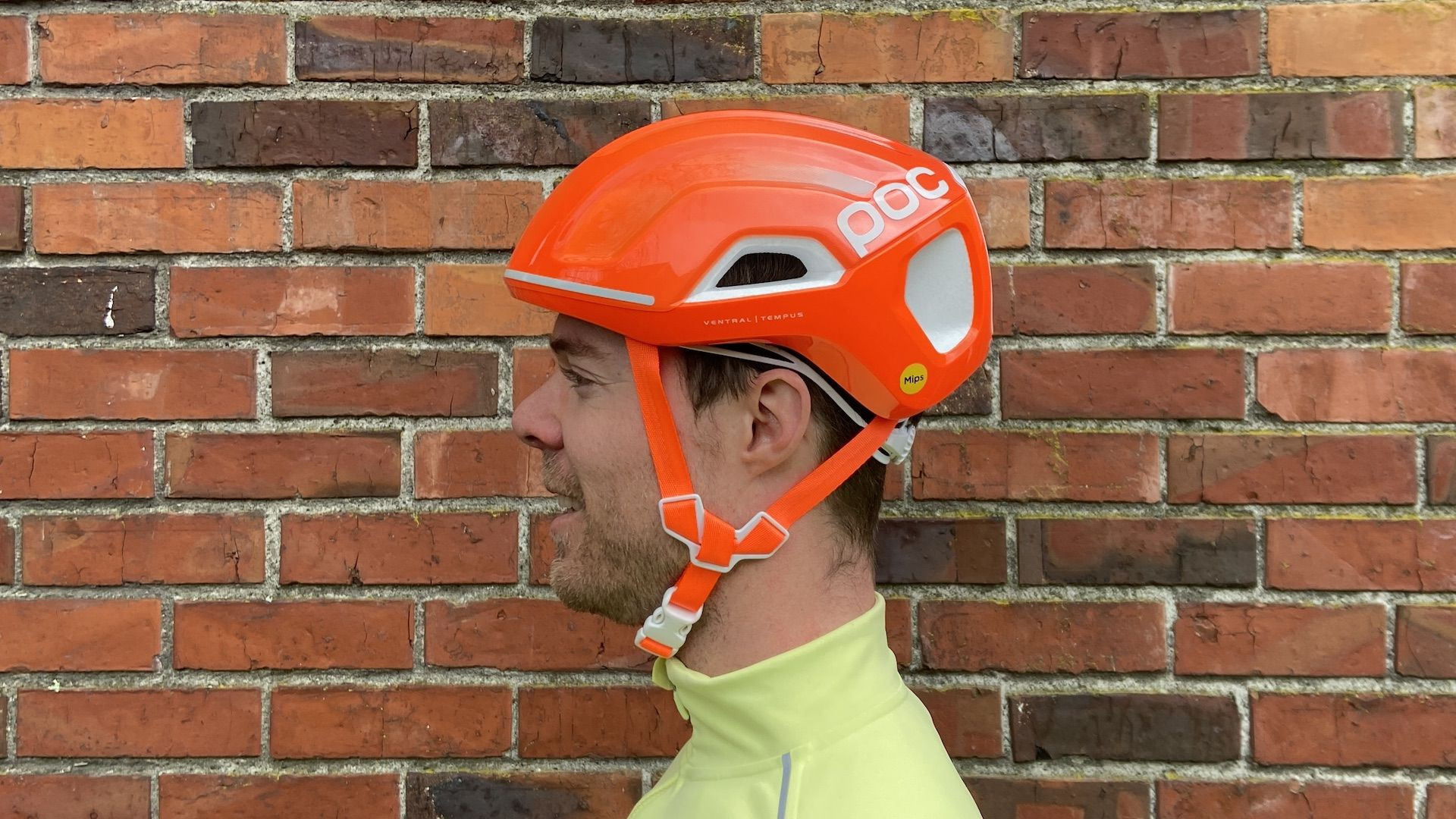 Male cyclist wearing the POC Ventral Tempus MIPS bike helmet
Male cyclist wearing the POC Ventral Tempus MIPS bike helmet
17. POC Ventral Tempus MIPS Helmet
Pros: Good weather protection, high visibility features, comfortable latest MIPS Integra system.
Cons: Premium price.
The POC Ventral Tempus MIPS is designed for wet and dark conditions. Based on POC’s warmer weather helmets, it features an enclosed shell, orange colorway, and 360° reflective details for enhanced visibility. The latest MIPS Integra system is more comfortable than previous versions. Its compact shape provides weather protection without overheating in cooler conditions. Comfortable for cold weather riding and effective in rain, though the shape may be slightly bulky for some. Ideal for riders in colder regions or year-round commuters.
Read more in our expert review: POC Ventral Tempus MIPS helmet full review
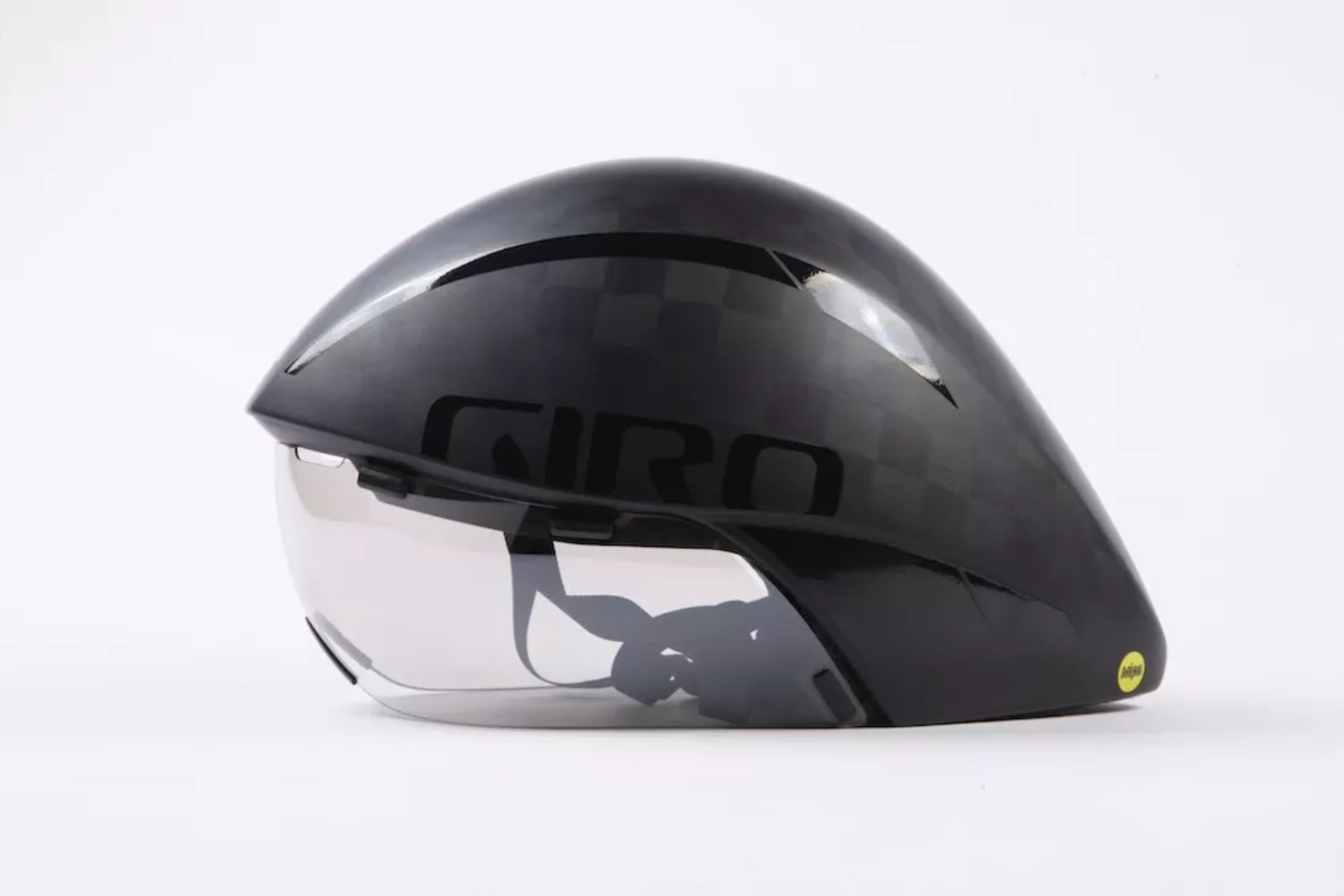 Giro Aerohead Ultimate MIPS pictured in the color black
Giro Aerohead Ultimate MIPS pictured in the color black
18. Giro Aerohead MIPS TT Helmet
Pros: Aerodynamic, wider than expected field of view, comfortable fit while riding, lighter than other options.
Cons: Breathability is not a strong point, very high price tag.
The Giro Aerohead MIPS TT helmet is engineered for maximum aerodynamic performance in time trials. Its wind-cheating silhouette and four Wind Tunnel vents enhance speed, though breathability is limited. It offers MIPS and a surprisingly wide field of view thanks to a wrap-around ZEISS Optics eye shield. The shield is magnetically attached and can be flipped up for storage. While expensive, it’s a top-performing TT helmet with a focus on aerodynamics and visibility.
Read more in our expert review: Giro Ultimate Aerohead MIPS full review
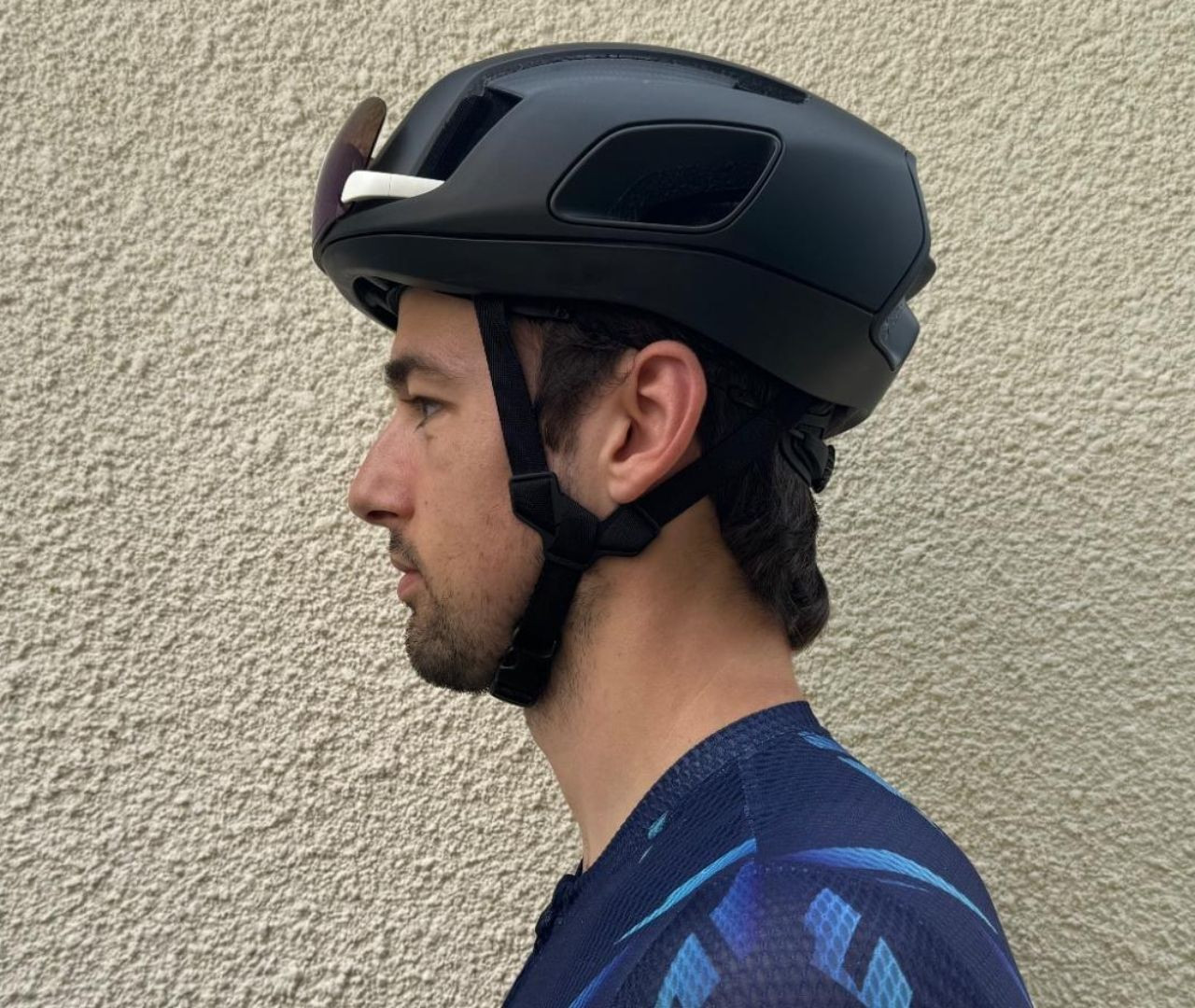 POC Cytal Helmet
POC Cytal Helmet
19. POC Cytal
Pros: 5-star safety rating, brilliant ventilation, reduced brow contact patch, good adjustability, comfortable.
Cons: Very expensive, limited color options, shell is easily scuffed.
The POC Cytal is a high-end, highly ventilated aero helmet. Its carbon wing enhances aerodynamics, ventilation, and safety. Supersized vents and internal channels provide exceptional airflow, keeping riders cool even in warm conditions. The adjustment system ensures a comfortable and pressure-point-free fit. It achieves a 5-star safety rating from Virginia Tech despite not using MIPS. While very expensive and with limited color choices, it offers top-tier performance and ventilation.
Read more in our expert review: POC Cytal full review
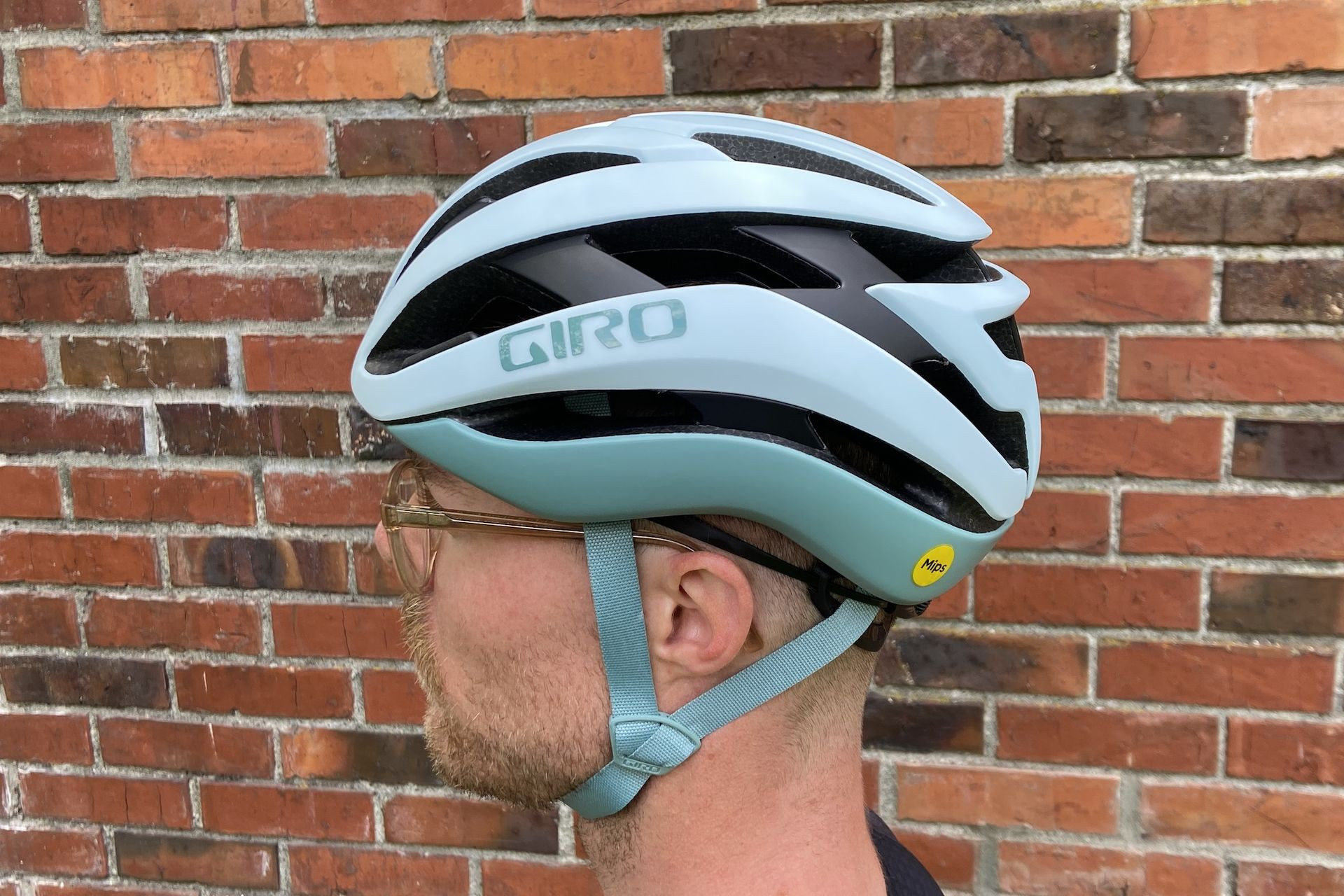 Giro Cielo helmet
Giro Cielo helmet
20. Giro Cielo
Pros: Good value, styling inspired by classic Giro helmets, MIPS-equipped.
Cons: Relatively heavy, fit may not suit all head shapes.
The Giro Cielo is a mid-range all-rounder, drawing design cues from the iconic Giro Aeon. It features 22 vents and internal channels for ventilation and a compact profile. MIPS Evolve Core liner provides rotational impact protection. At 295g, it’s relatively heavy for a road helmet. Comfort is good thanks to ample padding, and ventilation is adequate for various conditions. While heavier than some, it offers good value and MIPS safety.
Read more in our expert review: Giro Cielo full review
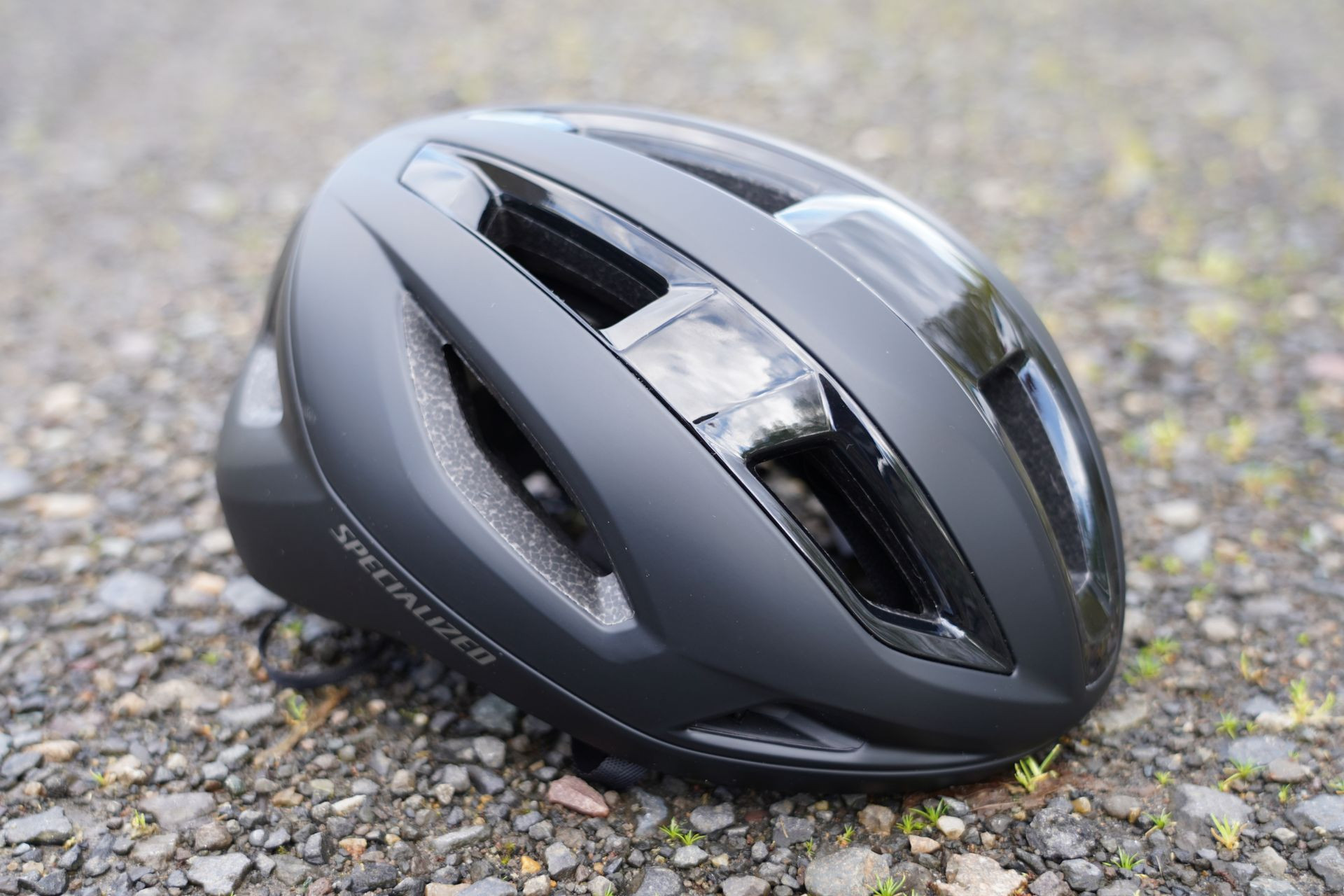 Specialized
Specialized
21. Specialized Search
Pros: Highly vented, adventure-focused design.
Cons: Specific to gravel/adventure riding.
The Specialized Search is designed for adventure and gravel riding, prioritizing ventilation. It features large vents and 4D Brow Cooling technology, directing airflow across the forehead. MIPS Evolve Core Solution provides rotational impact protection. Hidden rubber flaps offer sunglass storage. Weighing around 290-300g, it’s a well-vented option for off-road adventures.
Meet the Testers
Anne-Marije Rook
Originally from The Netherlands, Anne-Marije has extensive experience in bike racing and cycling journalism, providing expert insights into road bike helmet performance and features.
Rachel Sokal
Rachel has a decade of experience reviewing bike tech, with expertise in mountain biking, gravel, and road cycling. Her diverse riding background informs her thorough helmet evaluations.
Buyer’s Guide to Choosing the Best Road Bike Helmets
What Makes a Road Bike Helmet Safe?
The core purpose of any cycling helmet, especially road bike helmets, is head protection. All helmets sold legally must meet minimum safety standards in their respective regions (CPSC in the US, EN 1078 in the UK and Europe). Spending more on a helmet doesn’t automatically equate to greater safety in terms of meeting basic impact standards. Instead, higher-priced helmets often offer benefits like lighter weight, improved ventilation, more comfortable and adjustable retention systems, and advanced safety technologies like MIPS.
MIPS (Multi-directional Impact Protection System) is widely recognized as a leading safety technology in helmet design. It’s a crucial factor to consider when evaluating helmet safety performance, and we’ll delve into it further below.
If budget is a primary concern, our guide to the Best cheap and budget friendly bike helmets can help you find safe and effective options without breaking the bank. For parents looking for children’s helmets, our Best kids’ bike helmets guide offers essential information for keeping young riders safe.
Ensuring Helmet Safety: Standards and Certifications
Always verify that any road bike helmet you consider meets the safety standards relevant to your location. Look for certifications like CPSC (US) or the EN 1078 sticker (UK and Europe). These certifications confirm the helmet has undergone rigorous testing covering construction, field of vision, impact absorption, retention system integrity, chinstrap strength, and buckle reliability. Participation in races, sportives, gran fondos, and triathlons often requires helmets meeting these standards.
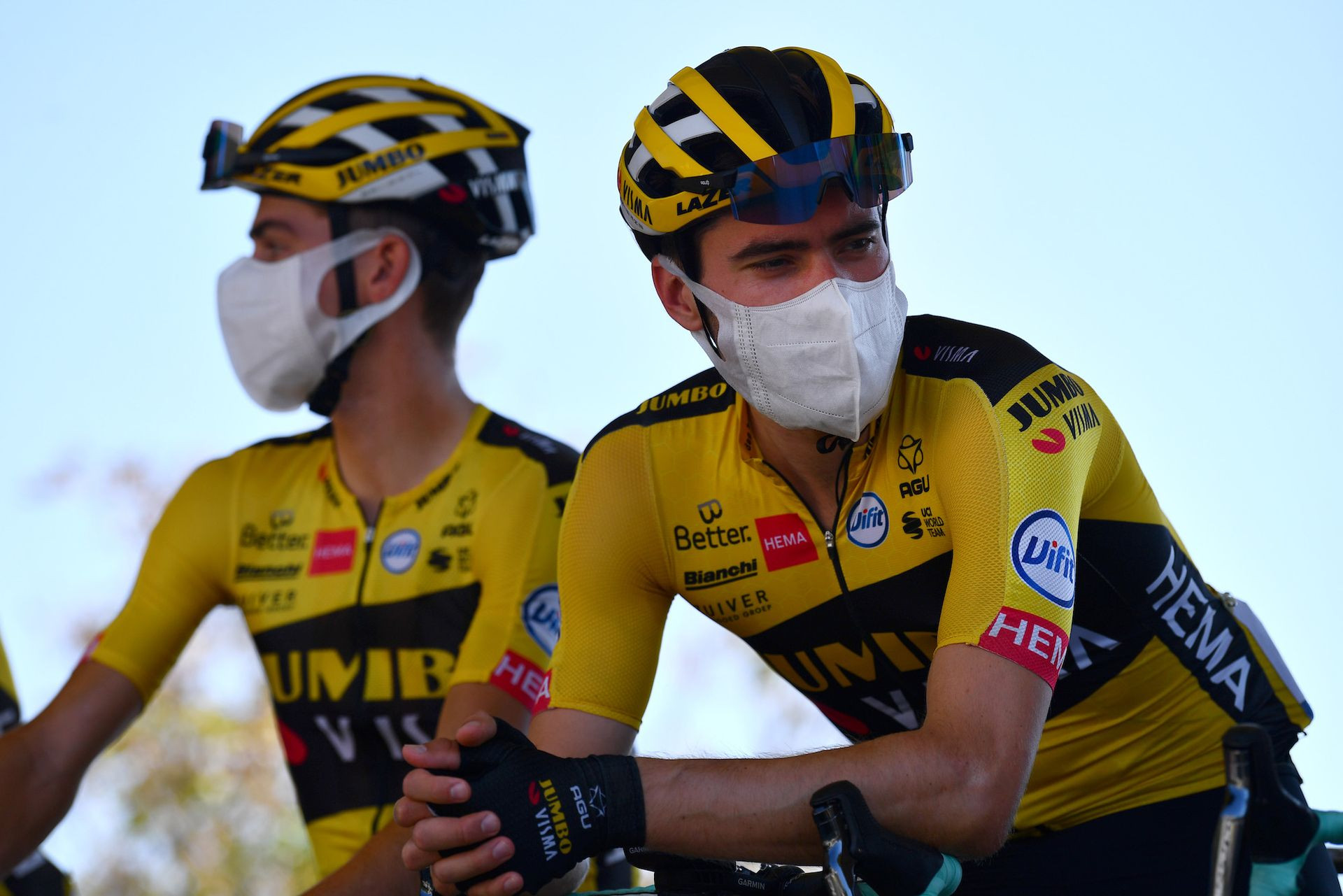 Tom Dumoulin at the 2020 Tour de France
Tom Dumoulin at the 2020 Tour de France
MIPS: Understanding Rotational Impact Protection
MIPS (Multi-directional Impact Protection System) technology is increasingly prevalent in road bike helmets. MIPS is designed to reduce rotational forces transmitted to the brain during angled impacts, a common scenario in cycling accidents. It works by incorporating a low-friction liner inside the helmet that allows the head to rotate slightly upon impact, thereby reducing the rotational energy transferred to the brain. While MIPS adds to the cost of a helmet, independent testing suggests it can significantly reduce the risk of injury in certain types of crashes, making it a worthwhile investment for enhanced safety. Some brands have developed similar proprietary rotational impact protection systems.
Achieving the Right Fit: Measuring and Trying On Road Bike Helmets
Proper helmet fit is paramount for safety and effectiveness. An ill-fitting helmet cannot provide the intended level of protection. Road bike helmets are available in various sizes, typically based on head circumference. Always consult the manufacturer’s size guide on their website for specific measuring instructions before purchasing.
To measure your head circumference at home, use a flexible tape measure. Position it approximately 25mm (two finger widths) above your eyebrows and about 15mm (thumb width) above your ears, ensuring it encircles the widest part of the back of your head.
If you are unsure about measuring yourself, visit your local bike shop for professional assistance. This also provides the opportunity to try on different helmets for comfort and fit assessment before buying. Comfort is crucial, especially for long rides. Try on various makes and models, as internal shapes vary significantly between brands. Pressure points, even with the correct size, can indicate a poor fit for your head shape.
While some helmets are marketed as women’s specific, often featuring ponytail-compatible designs like Specialized’s Hair Port system, most road bike helmets are unisex and designed to fit both men and women effectively.
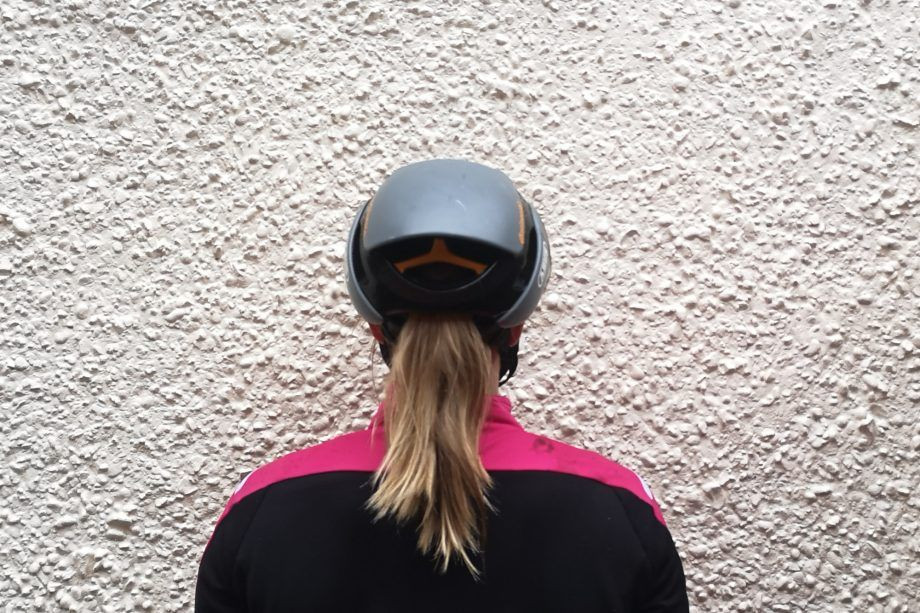 Road bike helmet with ponytail port
Road bike helmet with ponytail port
Adjusting Helmet Size: Retention Systems
Yes, road bike helmets are designed to be adjustable. A retention system, typically a dial or ratchet mechanism at the back of the helmet, allows you to fine-tune the fit to your specific head size. The best systems are easily adjustable with one hand, even while riding. A good retention system should also allow enough room to comfortably wear a thin thermal skull cap or cycling cap underneath for added warmth or rain protection. If the retention system feels like it’s at its maximum or minimum adjustment limit when you first try on a helmet, it’s likely the wrong size.
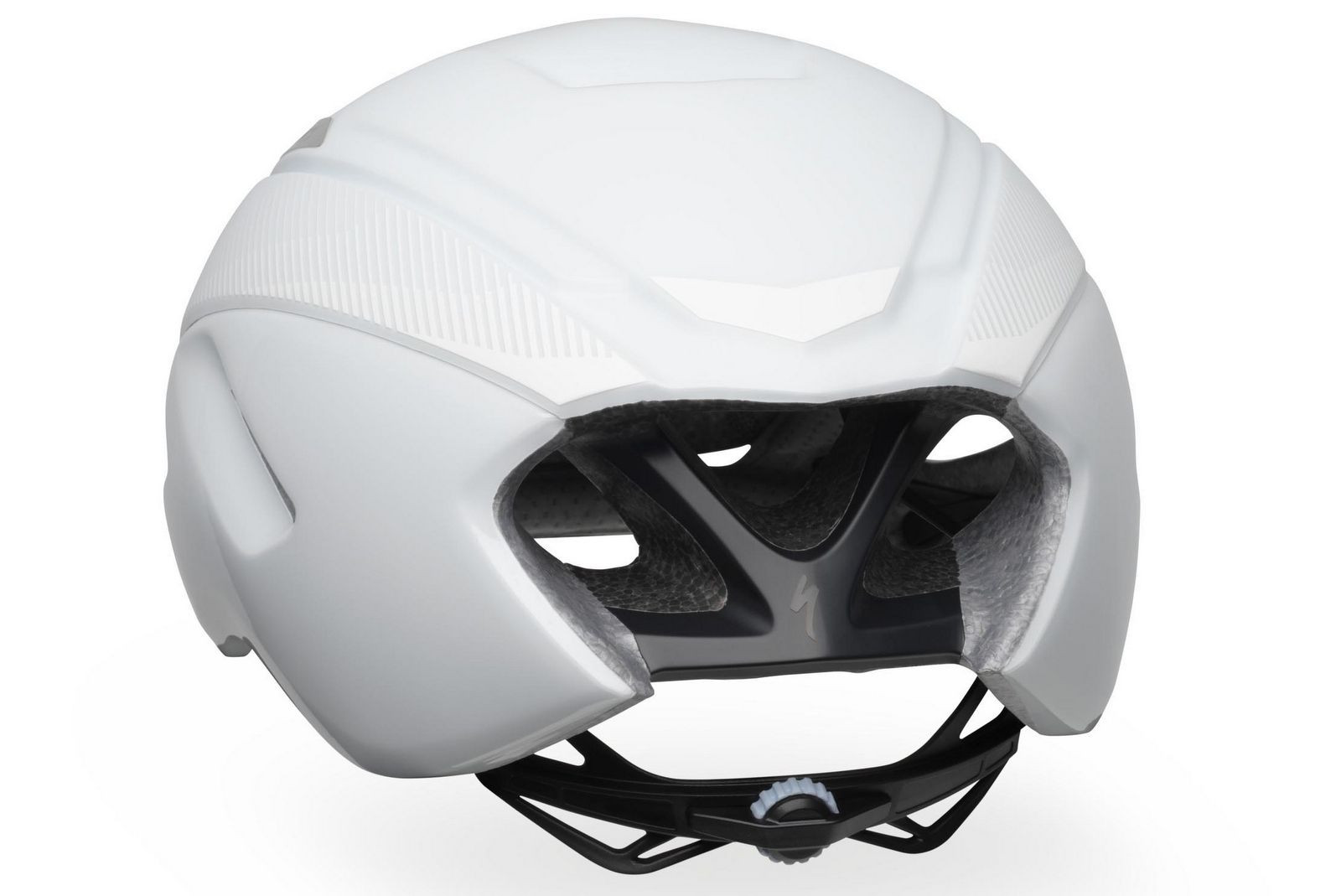 Dial retention system on a road bike helmet
Dial retention system on a road bike helmet
The Role of Padding in Road Bike Helmets
Padding inside a road bike helmet significantly enhances comfort and helps manage sweat by wicking it away from your head. Ideally, padding should be removable for washing and eventual replacement, as it can degrade over time and use. Padding thickness and style vary between models, so trying on different helmets is the best way to determine your preferred padding feel and coverage.
Ventilation: Staying Cool on the Road
Vents, or holes in the helmet shell, serve two primary purposes: reducing weight and improving ventilation. Helmets with fewer or no vents tend to be warmer. However, advancements in aero helmet design have shown that effective internal channeling can provide surprising ventilation even in seemingly less-vented designs. While ventilation may not be immediately apparent when trying on a helmet indoors, it becomes critical during strenuous rides, especially in hot weather cycling, where good airflow is essential for comfort and performance.
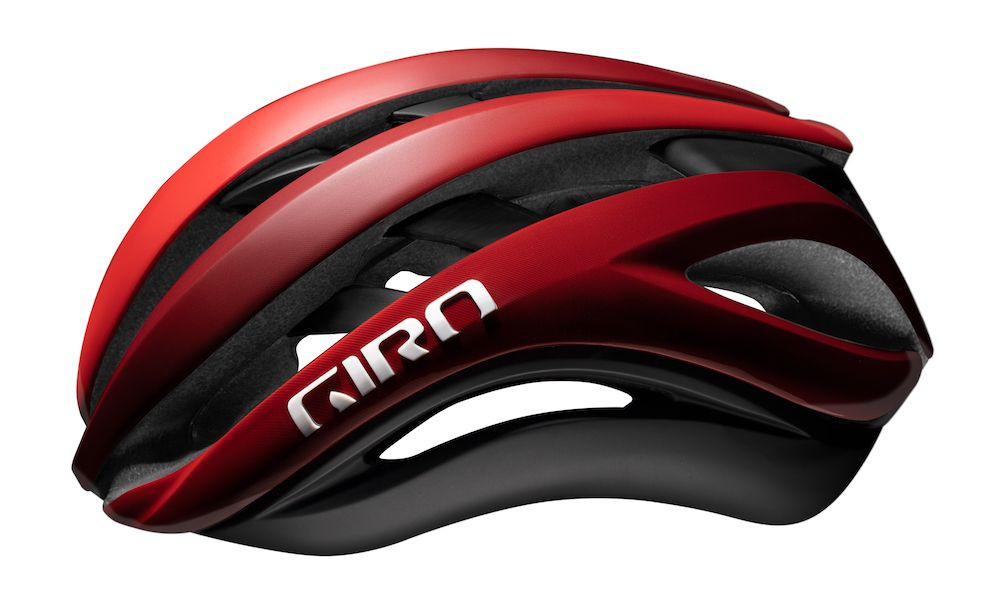 Ventilation in a Giro road bike helmet
Ventilation in a Giro road bike helmet
Weight Considerations for Road Bike Helmets
In cycling gear, lighter weight often correlates with higher price. The best road bike helmets in each category prioritize low weight, enhancing comfort by reducing strain on your neck, particularly on longer rides. For competitive cyclists, a lighter helmet contributes to a better power-to-weight ratio. While a 50g difference may seem minimal to casual riders, for professional cyclists seeking every marginal gain, weight savings can be significant.
Road Bike Helmet Replacement: When and Why
Road bike helmets should always be replaced after any impact, even if damage appears minor. Impacts compromise the integrity of the EPS foam and other safety features designed to absorb crash energy. Even seemingly small scuffs can indicate internal damage that reduces the helmet’s protective capacity in future crashes.
Beyond impact damage, helmet manufacturers generally recommend replacing road bike helmets every three to five years. This is due to “EPS volume loss,” the cumulative effect of minor bumps and knocks during storage and regular use, which gradually degrades the foam’s protective properties. UV radiation and extreme temperatures can also weaken the helmet’s plastic shell over time, further necessitating periodic replacement. Proper storage, away from direct sunlight and extreme temperatures, can help prolong helmet lifespan, but regular replacement within the recommended timeframe is crucial for maintaining optimal safety.
How We Test Road Bike Helmets
Our road bike helmet recommendations are based on rigorous testing and extensive cycling experience. The Cycling Weekly Tech Team members are seasoned cyclists with years of experience across various cycling disciplines. We evaluate helmets in real-world riding conditions, considering factors like fit, comfort, ventilation, aerodynamics, and safety features. Our diverse team ensures a broad range of head shapes and preferences are accounted for in our reviews, providing well-rounded and reliable recommendations. Even when a full review isn’t yet available, our recommendations are based on our deep brand knowledge, experience with previous models, and confidence in product quality and performance.

